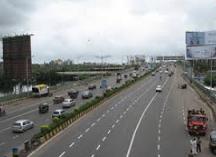 The term lane can be used in different ways. Currently, the most common use refers to the bands or stripes that divide a road longitudinally. Each of these lanes allows the transit of one row of cars.
The term lane can be used in different ways. Currently, the most common use refers to the bands or stripes that divide a road longitudinally. Each of these lanes allows the transit of one row of cars.
The sum of the lanes, which may be marked on the asphalt , constitutes the carriageway of the street, avenue or highway in question. For example: "The left lane is intended for vehicles traveling at higher speeds," "The fall of a tree forced two lanes of the highway to be cut," "Be careful, there are many potholes in this lane."
On some roads there are special lanes for bicycles . Known as a bike lane , bicycle path or cycle path , this type of lane encourages the use of bicycles and provides greater safety for cyclists.
The importance of the cycle path is becoming increasingly evident in some countries, although it has not yet received the attention it deserves on a global level. If all large cities encouraged the use of bicycles instead of motorized vehicles , environmental pollution and the number of car accidents would decrease considerably, in addition to the health of those who opted for this form of exercise would increase.
There are countries where the concept of rail is used to refer to the steel or iron bars that are arranged in parallel to form the track where the trains move. In other nations, the rail is known as a riel or rail .
These rails allow the wheels of trams and trains to move. They not only provide support to the formations, but also conduct electrical current and guide the path.
A rail, on the other hand, is a groove , groove , or channel that allows an item to slide in a certain direction. Many windows and doors are opened and closed by moving them in a track.
As a proper name, we find this term in Santiago de Carril , one of the most important parishes in Villagarcía de Rosa, a municipality in the province of Pontevedra, in northwest Spain. The founding of Carril took place around the year 1500, initially as a town, and a decade later it already had its own port.
 It is necessary to point out that the port of Carril became among the most important in Galicia in the mid-18th century. In the early 1800s, they authorized it for embarkation and disembarkation with the American continent. It was a town of great importance, with its nautical school and its hospital.
It is necessary to point out that the port of Carril became among the most important in Galicia in the mid-18th century. In the early 1800s, they authorized it for embarkation and disembarkation with the American continent. It was a town of great importance, with its nautical school and its hospital.
Carril had a strong link with Santiago de Compostela, whose burghers created a second-class customs office in 1801. Towards the middle of the 19th century, the population of Carril exceeded two thousand one hundred inhabitants, who were distributed in about two hundred and fifty houses that were on the Island of Cortegada, in the town and in two other neighborhoods that also belonged to its territory.
On the other hand, there is the magazine called CARRIL , a publication of railway interest published by the Association of Friends of the Railway , in Barcelona. It is carried out completely altruistically by a group of collaborators who cover different specialties related to the technical aspects, history and news of this means of transport.
The predecessor of this magazine was the internal communication bulletin that was published until 1977, the year in which its first period began, which lasted until 1982. It was then that its horizons expanded and it managed to reach fans of the world of the railway, as well as anyone who was curious. Since 1982 and until now, two issues are usually published per year.
